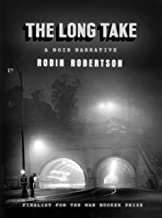When reading history, it's always instructive and insightful to step back and consider the “big picture”. Detail, though essential, indeed the very stuff of any understanding of history, can sometimes weave a web of obscurity and confusion around the obvious. The big picture, then, allows a reader to prioritize, to contextualize and to rationalize. What, then, might we make of a book which presents hardly any detail, but just a swift sketch of a big picture? Indeed, Sapiens by Yuval Noah Harari presents a picture of history so big it purports to be nothing less than a birth to death biography of homo sapiens, the current and dominant human species, in case you have yet to meet one.
From evolutionary beginnings through the establishment of our genetic identity, Yuval Noah Harari charts of the human tendency to form social groups, use tools and language, while sustaining ourselves by hunting and gathering. We exit Africa – somehow, probably thanks to assistance from contemporary climate change - and eventually become established across the planet. Via our Cognitive Revolution we developed our early skills and became rather good at most things we tried to do. Perhaps two good.
Success, perhaps, led to an Agricultural Revolution, where suddenly property became a concept. We domesticated animals, selectively bred yield into crops and docility into beasts of burden. We also succumbed to other new concepts such as epidemics. Note here that an unknown number of millennia intervened between stage one, the Cognitive, and stage two, the Agricultural. Writing also intervened at some point, but probably only after we invented property, for only then did we start to train accountants.
Agriculture, this new mode of production, effectively unified the human race, however. It was so successful that it spread to wherever humans ventured, and progressively this had become the entire planet. But this relatively sedentary lifestyles and the emerging possibility of control of economic resources led to the establishment of towns and villages, empires, armies, castles and probably soft furnishings.
And then there was Science and human kind’s increased ability to predict or control the physical world beyond the lifecycles of plants or docile servant beasts. Beginning barely 300 years ago, this latest, current and possibly last human revolution is still with us. It led to the invention of countless previously non-existent concepts, such as capitalism and socialism, mass consumption and ideological veganism, exponentially increased energy consumption, a Green Revolution that perhaps laid waste, genetic engineering, the internet, artificial intelligence and breakfast cereals.
Throughout, Yuval Noah Harari identifies identifies the human need to create myth. And this has real purpose in our race’s modus vivendi. Without myths called religion, human beings would never have been able to conquer the genetic necessity of individual competition. We would not have become urbanized or cooperated to solve the complex tasks that exploiting our planet requires. Harari’s grouping together of all such mythical motivation – and thereby his dismissal of its representing anything approaching the concept of truth – might have led to the book and the author falling foul of certain authorities across the globe, if past experience is anything to trust. Perhaps this also tells us something about what kinds of book the committed religious don’t read.
Thus through the 400 pages or so of Sapiens we can relive the entire
history of the human race and travel centuries into its speculated future.
Though it is easy to sound flippant about a book that presents itself almost as
a biography of homo sapiens, there is hardly a page of the work that is not
stimulating, informative or even surprising, all at the same time. Such broad
pictures are perhaps easy to write, especially if they are in accurate or
polemical. But that when they are well researched, lucidly written, accurate,
insightful and thought-provoking, their construction of a big picture really
does help us to understand and contextualize the details of history which
otherwise may not constitute joined-up thinking. Sapiens is a thought-provoking
and challenging work, claiming to be A Brief History of Mankind. By the end we
are eager for more, but also not convinced there will be much more to write.










